Text
Publishing a Book? Here Are Ten Places to Request a Review!

Photo by Tom Hermans
So, you’ve finally done it! You’ve finished your manuscript, sold it to the publisher, completed the editing process, and you’ll soon be the proud author of a new novel! Time to sit back, relax, and appreciate a job well done, right?
Well, no, not exactly.
As many authors will tell you, getting your work into print is by no means the end of a writer’s job. In fact, it’s simply the first page in a new chapter. Now it’s time to begin promoting your book. That, of course, will likely involve a lot of different things—ranging from social media to signings—but one excellent way to attract readers is through book reviews.
That being said, there are a lot of different ways to achieve this. You can encourage reader reviews on sites such as Goodreads, contact bloggers who write about novels (such as myself, hint-hint,) and even reach out to web pages like Online Book Club. But what if you also want reviews that have a more official flavor? How might you go about getting your work noticed by magazines and literary journals?
Great news! There are a plethora of publications that accept requests for book reviews! Below is a list of several for you to consider.
1. Book Life
This is the online services and resource site for Publishers Weekly, a literary journal that certainly needs no talking up! They accept requests for book reviews in a wide range of genres. (For those who are interested, they also offer links for things like PR and social media marketing.) Please be advised, however, that all works must have US distribution to be considered. You’ll also want to be aware of the required publication lead times, which can be found in the magazine’s submission guidelines.
2. London Review of Books
This is a highly respected magazine that publishes fiction from some of the best current authors as well as book reviews. Like many others on this list, they can only review hard copies. Information about requesting reviews can be found with their submissions guidelines.
3. Furious Gazelle
As an online literary magazine, Furious Gazelle publishes short stories, author interviews, and book reviews. Requests can be emailed directly to the editors, who consider literary novels in a range of genres. A small but respected journal, this is a great venue for new writers seeking to get their work noticed. Information can be found on their submissions guidelines page, near the end.
4. Compulsive Reader
The name says it all. This online publisher is all about reading—well, that and music—and prides itself on in-depth, magazine-style reviews. It’s also one of the relatively few resources that reviews older work as well as new and upcoming pieces. Although focusing on literary fiction and poetry, they will considered books from other genres as well. Along with your request, the editor asks that you include one or two paragraphs about the work you wish to submit. Afterward, they will contact you about publishing a review if they feel your book is a good fit.
5. The Malahat Review
This Canadian-based literary journal publishes, among other things, reviews of novels, creative nonfiction, and poetry. Like most entries on this list, they can only review a selection of the books they receive each year, and in this case, they state that they are only able to review between one-eighth and one-fifth of the work they are sent. The editors request hard copies rather than ebooks, and are only interested in work by Canadian writers.
6. LA Review of Books
LA Review of Books is a nonprofit magazine working to revamp the way we look at book reviews in the digital age. Dedicated to promoting literature, art, and culture, they are interested in work from a range of genres written by diverse authors. Information about requesting a book review can be found on their submissions page about halfway down. They strongly prefer being sent hard copies.
7. Neon Books
Neon Books is an independent publishing house based in the UK that also boasts a review blog and a well-established literary journal. They work with authors all over the world, but are mainly interested in magical realism and unusual fiction. If you write poetry, novellas, and such, they consider those works for reviews as well. The same is true for published collections of short stories.
8. Strange Horizons
This is an excellent option for new and less-known authors of unique novels. Strange Horizons publishes reviews of science fiction, fantasy, and speculative fiction three times each week, and is especially interested in promoting works that otherwise might not garner the attention they deserve. They especially like literary works that cross or challenge genre boundaries. Before submitting a review copy, please email a query containing a brief summary of your work. They accept both paper and digital formats. You can learn more under Submitting Works For Review near the bottom of their submissions guidelines.
9. The New York Review of Books
Another highly-respected literary journal, The New York Review of Books has been publishing fiction and critiques since the 1960s. They are interesting in reviewing work by various authors written in an array of genres. The editors also send copies of reviews to books’ publishers. Further information can be found under the Editorial heading on their Q&A page.
10. Book Reporter
This journal reviews almost everything. Almost. They will not accept self help, religious works, how-to books, travel guides, or health and medical texts. Other than that, if you can write it, they might be interested in reviewing it. In some cases, they will even review self-published fiction, although they are selective and require that a novel has wide hard copy distribution. (That is wonderful news for self-published authors as many other literary magazines will not consider their work.) As far as traditionally published novels are concerned, they do sometimes review ebooks, but are more likely to accept hard copies.
Whether you’re a new author or an experienced writer looking to promote your latest book, the links above can likely help. If your fiction is showcased in a literary journal’s review section, it may both reach a wider audience and gain greater regard in publication circles. That, in turn, can aid in continuing to grow your reputation as an author while following your dreams.
Happy Writing!
#books#book#review#reviews#request book review#literary journal#literary journals#literary magazine#literary magazines#book reviewer#magazine book reviews#book publication#publishing#book promotion#writer#writers#writing#fiction#novel#novels#list#how to get your book reviewed
3 notes
·
View notes
Photo
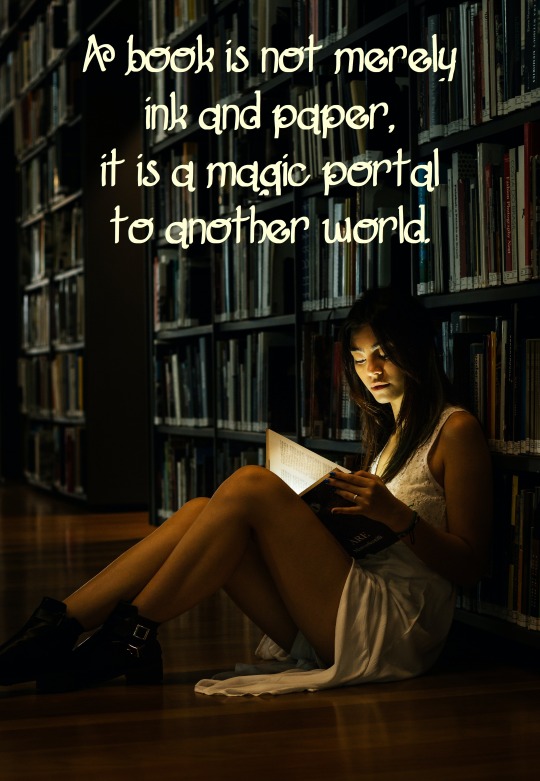
Photo by Luriko Yamaguchi
“A book is not merely ink and paper, it is a magic portal to another world.”
I couldn’t agree more!
#book#books#reading#readers#reader#read#fiction#novel#novels#magic#portal#another world#inspiration#inspirational#book lover#book lovers#writing#writers
1 note
·
View note
Text
Fiction Writing: Show and Tell

Image by M. H. Photography
We’ve all heard the age-old advice: “show, don’t tell.” It is, admittedly, a useful lesson for young writers, but is it really the golden rule of fiction that multitudes of teachers claim it to be? Many argue the point, stating that, like most things, storytelling is too complex to be easily boiled down to such simple guidelines.
There are, of course, many situations in which the adage rings true. In an article on Helping Writers Become Authors, novelist K.M. Weiland asserts that “Showing gives the readers the details of a scene, including what the character(s) are seeing, hearing, touching, tasting, smelling, thinking, and feeling emotionally.” This sounds obvious, I know, but it’s an important concept. As writers, our aim should be not simply to inform readers of the existence of a rose, but to help them see the rose, smell it’s perfume, feel the velvety petals and the prick of sharp thorns. But only if—and this is the crucial point—the rose is elemental to either the narrative or to character development.
The simple fact is that, while “showing” is vital to helping readers share characters’ experiences and thus building empathy for those characters, too much creates unnecessary bloat and drags a story down. It can negatively affect the pacing, slowing the action, or, worse still, even confuse readers as they try to figure how all that extraneous information relates to the plot. At the very least, the end result is likely to be a rather dull narrative.
In 5 Creative Flaws That Will Expose Your Lack of Storytelling Experience, StoryFix provides a three examples of how this can happen. The first is small talk in your dialogue. I cannot stress this enough. There is really no need to give readers the full conversation when only part of it is relevant to the plot. In fact, William Goldman, a highly-accomplished novelist and screenplay writer, urges authors to “begin our scenes at the last possible moment,” which keeps the narrative moving and the audience engaged. As such, StoryFix advises replacing pleasantries and chit-chat with a single sentence or phrase.
After a few comments about the weather, Marcus broached the topic most on his mind. “At the risk of sounding ungrateful, I have to ask: why me? We both know there are at least a dozen more senior professors in this department, so why ask me to lead this dig?”
It’s easy to see how this would be so much more interesting to read than multiple lines of dialogue about “how are you?” and “do you think we’ll get any rain?” Thus this is one case where, within certain parameters, telling rather than showing can be appropriate.
Another, once again according to StoryFix, is when dealing with sequential time fillers. Young writers are often tempted, in the interest of what they perceive as realism, to ply their readers with unnecessary details about a protagonist’s daily life. Let’s be honest, that quickly becomes dull. In fact, the best basic rule is that if events don’t provide exposition or vital plot points, we should probably either gloss over them and move on or skip them altogether.
Even in Slice of Life literary fiction, it’s important to choose minutiae with discernment, focusing on particulars that hold significance or poignancy for the main character, or which bring up a thematic thought or memory. In other forms of fiction, we should be, if anything, even more selective. For example, let’s suppose someone wanted to illustrate a heroine’s quiet, insular life by describing what she does upon arriving home after a long week at work. While some information might aid in character building, we still don’t need to hear every detail of her evening routine. If a writer provides overabundant information about how much this woman—let’s call her Amelia—relishes finally kicking off her high-heels, enjoys her hot shower and the way it relaxes her muscles, and debates over what to make for dinner before finally reaching the relevant part of the scene, readers will quickly become bored. Those details are not important for the story to continue, and thus become cumbersome literary “baggage,” if you will, bogging down the narrative.
StoryFix recommends again telling rather than showing, and then moving forward. This can be done either in brief descriptions, or, better yet, as a part of dialogue later in the narrative. I’ve included examples of both below. Telling via description might look something like this:
Showered, dressed in comfortable lounge wear, and armed with a glass of Pinot Nior, Amelia brought up her voicemail app before settling on the sofa. The missed call was from Derrick.
“Ami, listen to me,” his words were strangely ragged and hurried. “I’m on my way over. I found something on Xander in the archive, and it’s worse than we thought. For God’s sake don’t drink the wine he gave you!”
In this case, telling rather than showing Amber’s normal evening activities serves to keep the narrative moving forward while still setting an atmosphere of safe relaxation that can then be shattered. Leaping straight into the phone message might not allow readers to experience the protagonist’s jarring panic so completely, but taking too much time describing her evening might make the revelation too slow in coming and thus less impactful. Of course, as mentioned before, this is not the only way to handle the information. Below is an example of telling through dialogue instead.
Amelia quirked a half-grin. “The next thing I know you’ll start asking where I was Friday night.”
Detective Perez didn’t laugh. “And where were you?”
“Seriously?”
He only watched her, face expressionless, and she sighed.
“At home. Like usual.”
“At home.” Perez paused for a moment as if waiting for more. “Can you account for your time?”
This was getting ridiculous.
“Well, let’s see,” Amelia stared at him blatantly. “I came home around 5:35, took off my high heels because those things suck, got in the shower—that was at about 5:40, by the way—put on yoga pants and a t-shirt, fed the cat, started pasta and vegetables in the instant pot—6:27, in case your wondering—and poured a glass of Pinot Noir. Blackstone Vineyards. Rich and slightly woody with a fruity finish. Then I sat on the sofa and checked my voicemail at 6:34. Is that detailed enough for you or should I draw some illustrations?”
In this way, we learn several things about the protagonist—she lives alone, she is on friendly enough terms with a police detective that being questioned takes her aback, she is snarky, and she might have just become a suspect—all while simultaneously keeping the plot in motion. It’s not difficult to see why this is preferable to weighing down the narrative with unneeded descriptions.
I should mention, however, that there are a couple of types of fiction in which this is not always strictly the case. (Those who already see where this is heading will no doubt recognize the reason I chose a mystery scenario as that last example.) According to an article by Zara Altair on The Thrill Begins, successful authors thrillers and detective fiction often hide clues in plain sight. One of the ways they do this is by slipping a clue in amid otherwise inconsequential occurrences or conversations. Many, in fact, take it one step further, emphasizing unimportant details to draw attention away from the important one. Altair refers to this as “secret emphasis,” and it’s one of several great ways to allow readers to share the mentally engaging and sometimes confusing experience of solving a mystery. So, while our protagonist in our non-existent story, Amber, should not be described going through the motions of her normal evening in great detail, that would change if there were, say, some hidden clue that someone had been in her apartment. The same is true if she finds herself at an event where one or more suspects are present. You get the idea. Again, there still ought to be limits, but in those cases it is alright to include some extraneous detail.
The final example StoryFix provides which relates to showing rather than telling is an odd one: the description of food. That may sound a little absurd, but you’d be surprised how many young writers describe meals in superfluous detail. I’ve even seen it in published works sometimes, and trust me, unless there is a really good reason for it—such as a protagonist (and readers) experiencing unfamiliar foods for the first time or a narrative centered upon culinary pursuits—it really is dull. An audience might find themselves thinking things like: “yes, alright, I know what beef stew is. Can we move on, please?”
While StoryFix asserts that details about food should never be included, however, I do have to respectfully disagree. There are some situations where some descriptions of fare are fitting or even vital for the narrative or for character development. As mentioned before, in fiction with culinary-related themes, such as Esquivel’s Like Water for Chocolate, cooking and the protagonists relationship with food can play an important role. Similarly, basic descriptions of meals can serve as a way to illustrate characters, such as in Rex Stout’s Nero Wolfe novels. In these books, the eccentric armchair detective is known for being a gourmet, and his assistant Archie Goodwin often briefly describes his boss’s succulent meals and arguments with the cook, Fritz, about the finer points of culinary arts as a tongue-in-cheek way of further illuminating Wolfe’s character. However, even in these cases, the authors don’t go overboard with descriptions, and that is a very important point. While it’s not always wrong to include descriptions of cuisine, these should be told rather than shown. We don’t need an entire scene detailing every smell, flavor, and presentation.
As you can see, the only truly hard-and-fast rule when it comes to “show and tell” in writing is that there are no hard-and-fast rules. However, this will, perhaps, help you to better recognize situations in which it is preferable to provide brief descriptions rather than detailed scenes. While “show, don’t tell” may be generally good advice, being aware of these exceptions to the rule may result in more engaging and enjoyable tales. Although it’s far from the only element of a well-written narrative, telling rather than showing certain details, and choosing those details with discernment, can help writers create stories that are better paced and less weighed down. Knowing when to show and when to tell is an important building block for penning a truly interesting fiction.
#writing#fiction writing#writer#writers#write#writing tips#tips#advice#show#tell#show don't tell#show and tell#author#authors#novels#short stories#fiction#plot#pacing
0 notes
Text
Review: Lady Anna by Anthony Trollope

Art by Anna Veronika
Despite being written and set in a different period of English history, Anthony Trollope's fiction was recommended to me as an excellent option for readers who love Jane Austen’s novels but have read through her entire body of works. I was not disappointed. Trollope's book certain does has a flavor very similar to that of Jane Austen’s novels, blending old-world manners and charm with a narrative surrounding a female protagonist determined to both find happiness and be true to herself in the midst less-than-ideal circumstances. Detailed and intricate, it chronicles the trials and triumphs of Lady Anna as she strives to find her own place in the world.
Trollope's heroine is strong-willed in a manner befitting a mid-nineteenth century woman. She is caught in a struggle between her mother, the disinherited Lady Lovel, and her cousin, Frederick Lovel, as well as an equally difficult contention between the upper and lower classes of England. It is this polite war of opposites that makes the book so interesting.
There is a definite flair of both socialism and early feminism in this narrative. Lady Lovel has been ill-used and left penniless by her late husband, leaving her to raise their daughter as best she can. In a complete reverse of the typically expected trope of the time, the aristocratic Lady Lovel is saved by the generosity and friendship of a commoner, tailor and political radical Thomas Thwaite. After twenty years of fighting to have her title acknowledged and her fortune restored, Lady Lovel at last sees her chance—but it may come at the cost of her daughter's happiness. She must decide what is really best for Anna: what society proclaims to be preferable, or what Anna herself wants. Meanwhile Anna must choose where her loyalties—and her heart—will lay.
One part love story, one part courtroom drama, and one part historic slice-of-life, Lady Anna is a book of multiple layers. This novel is about far more than love and marriage in refined nineteenth century England. It is a tale concerning the disconnection between social classes of the era, and the assumptions that grow out of it. It is a story filled with conflicting ambitions and desires that mirror the quiet battle between social expectations and self-realization. Most of all, it is a novel that pits nineteenth century norms against personal freedom as Anna, a young woman confined by the rules of Victorian England, fights for the right to make her own choices.
My only issue with this novel was that, in a couple of places, the narrative seemed to drag a bit. Nonetheless, if you love Victorian novels, as well as elegant-but-strong heroines in the style of Jane Austen, you will enjoy this book. If, however, you are unused reading in a historical context, or you dislike the more formal language of the nineteenth century, this novel is not for you.
#Lady Anna#book#novel#books#novels#classic#classics#fiction#book review#book reviews#review#reviews#book recommendations#Anthony Trollope#Jane Austen#if you love Jane Austen#read#reading#book lover#book lovers
13 notes
·
View notes
Text
Review: City of Forts by Jason Beech

Photo by Florian Olivo
There are some things that change vastly between different levels of society, and there are some things that remain the same. One of the latter is the spirit of childhood, with its craving for freedom and adventure, it’s belief in everlasting friendship, and it’s hopeless wish that nothing will ever change. But one of the differences between social classes is the safety (or lack thereof) that children experience. Jason Beech’s City of Forts explores both of these aspects, creating a setting that is nostalgic and gritty all at once.
Adolescent Ricky Nardilo has more than his fair share of problems: an absent father, an over-worked mother, a life of poverty, a little brother he is responsible for, and a world that seems completely indifferent to him. He’s a complex character: basically good, but displaying the same selfish mindset and poor decision making most thirteen-year-olds possess. Despite his hard reality, many of the protagonists largest concerns, at the beginning of the novel, are no different than those of most youths. He has an almost desperate drive to enjoy his last summer of childhood before starting high school. He faces an internal tug-of-war between being a good big brother and relishing his freedom. He struggles to keep his friendships intact as life and puberty bring alterations, all while navigating his confusing attraction to his long-time friend, Liz.
That all changes when, near the beginning of the narrative, Ricky and Liz find a dead body among the abandoned factory houses that have become their group’s playground as well as home to their friend, a runaway named Bixby. Suddenly, Ricky’s problems become a lot bigger and he and his companions, untrusting of adults, must find a way to deal with their macabre discovery alone. They can’t tell the authorities, because it would mean losing their “City of Forts,” the one place they feel alive and free, as well as revealing Bixby’s whereabouts to social services. They can’t tell their parents for much the same reasons, with the added problem that it would lead Ricky’s mother to discover that he leaves his little brother home alone every day. Leaving the dead man where he is, however, is completely out of the question. It’s a broiling hot summer, and he’s already starting to smell. Sooner or later wildlife will be attracted to the corpse, and, aside from the inherent horror that entails, it will likely attract other unwanted attention.
The only reasonable course is to bury the body. Ricky, Bixby, Liz, and, quite by accident, the newest member of their group, Tanais, all become involved. Along with attempting to bury the body, Ricky, constantly worried about money and well-aware that his mother works three jobs to keep the family fed, secretly finds the man’s wallet and takes all the cash. The combination of these actions sets into motion a dangerous game of survival in which the stakes are high and the price of failure is all too real. What starts as a few seemingly odd incidents, frightening but not not necessarily perilous, quickly escalates into a stunning tale of crime, corruption, friendship, and betrayal. Some relationships become strained while others become strengthened. Pursued by gang members and authorities, Ricky fights against the odds to keep himself, his family, and his friends safe.
The dangers, however, are multitudinous and the friendships are not always clearly defined. The leader of the dangerous Ghost Boys wants to know what happened to the dead man, his friend, and may demand payment in blood if he believed Ricky and his companions are responsible. A member of the local police, Officer Ray, acts like he wants to help the protagonist, but Ricky is far from convinced he can be trusted. Liz’s father, Mr. Panowich, may be the boy’s best chance at keeping his younger brother, Brett, out of harm’s way, but there seems to be something not quite right going on in the older man’s household. Then there is the mysterious Mr. Vale and his son, Charlie, residents of the more affluent nearby city who may be Ricky’s only hope of escaping the Ghost Boys’ threat—as well as, perhaps, his life of hopeless poverty, anonymity—but who may not have the adolescent’s best interests at heart. Amid all of this uncertainty and peril, a teenage boy must grow up quickly and find his path; otherwise he might never grow up at all.
One part dark crime thriller, one part social commentary, and one part heartfelt coming-of-age story, City of Forts seamlessly blends together the relative innocence of youth with the harsh realities of life on the lowest rungs of society. Beech expertly captures his characters’ emotions and thoughts, excelling and communicating things never clearly stated. His narrative manages to balance complexity and intrigue with comprehensibility, weaving multiple strands into intricate twists and turns that, somehow, always surprise yet never confuse. Perhaps this novel’s greatest strength, however, is how well it pulls readers into the world Ricky and the others inhabit. Vividly descriptive while still maintaining the same slightly rough tone, even in the narration, City of Forts makes one feel the relentless burn of a scorching summer day, the startling half-mad fear, the biting uncertainty of poverty. Readers will smell the hot pavement, squint in the glare of white-hot sunlight reflected by abandoned windows, recoil from the damp reek of alleyways. Beech beings his entire story to life, making it all the more meaningful and engaging. Throughout it all, however, he never loses the perspective of an adolescent boy, and that makes this novel a rather unique and fascinating experience.
Readers looking for a deep, multilayered thriller that neither pulls its punches nor shies away from the more emotional aspects of its protagonist will not be disappointed by City of Forts. Offering an interesting combination of grim danger and coming-of-age discovery, along with a healthy dose of mystery and drama, this novel pulls readers into its setting and holds them there. Rough and gritty yet heartfelt until the end, this is a book sure to be enjoyed by nearly any fan of the genre.
#book#books#novel#novels#book review#book reviews#review#reviews#recommendation#recommendations#thriller#suspense#City#Forts#City of Forts#Jason Beech#literature#narrative#read#reader#reading#readers
0 notes
Text
REVIEW: Home by Nightfall by Charles Finch

Art: Somerset House by John Leighton
I happened upon this novel in a used book store and decided to give it a chance. Thank goodness I did, or I would have missed a gem! There are a lot of modern authors who write Victorian mysteries, but few do it as well as Charles Finch. Detailed knowledge of Victorian English culture and society enables Finch to craft believable characters, scenes, and circumstances. Historical information is relayed in such a way that it blends seamlessly with the narrative.
Despite my having begun with the ninth book in the series, I had little trouble deciphering the pre-existing relationships between characters, though I could tell an over-arching narrative existed behind the novel's individual mystery. The deductive aspects of the book were well-constructed, and I was kept guessing and eagerly following clues until near the end. With a lyrical style, believable characters, and a well-constructed plot, I found Home By Nightfall to be a thoroughly entertaining and enjoyable read. In fact, both the historical accuracy and intricate mystery were so engaging that I felt almost as if I had discovered a previously unknown novel by one of the great Edwardian mystery writers. That thrilled me because, much though I love works by Sir Arthur Conan Doyle and Wilkie Collins, there are only so many times one can reread them in a year. This novel fulfilled the desire for such historical detective fiction with an entirely new narrative.
In fact, I had only one noteworthy qualm about this book. While, for the most part, the characters felt like they might have stepped directly out of history, at a couple of points the dialogue felt slightly forced. Throughout the rest of the novel, however, it flowed naturally, rendering this single small complaint nearly negligible. Compared to many other modern mystery novels set in Victorian England, I found this one to still be far superior. If you love classic mysteries like the tales of Sherlock Holmes, and are looking for something new in the same vein, I recommend Home by Nightfall.
#book#books#novel#novels#fiction#detective fiction#mystery#recommendation#recommendations#book review#book reviews#historical#mystery fiction#historical fiction#Home by Nightfall#Charles Finch#book lover#reading#read#reader
0 notes
Text
The Travelling Cat Chronicles by Hiro Arikawa

Photo by Zane Lee
A beautiful, moving tale for cat lovers, "The Traveling Cat Chronicles" takes readers on two journeys. The first is a road trip around modern Japan, shared by a cat, Nana, and his person, Satoru, as the latter tries to come to grips with changes that the former slowly begins to comprehend. The second is a journey through the life and friendships-- both human and feline-- of a young man reconnecting with his personal past. One part travel journal, one part fiction, and one part celebration of the pets who make our lives special, this is a truly special book.
A work of art balancing sentiment, imagery, and narrative, this is a truly special book. The language is beautiful in its simplicity, like bare trees in winter. Author Hiro Arikawa's deep understanding of the emotions attending life events, massive and minuscule, is surpassed only by his clear understanding of the feline friends that, for many of us, are an important part of both. (You may even be reminded your own cats at times thanks to Arikawa's keen observations on feline behavior.) The narrative is told from Nana’s point of view, and Arikawa does an excellent job of clearly communicating things through that lens while still holding onto a curious and sometimes confused tone that makes this novel an absolute treat. Readers may even find themselves thinking: “that is exactly what cats would say if they could!”
While this aspect of the novel is charming, however, there is also so much more to the book. The Travelling Cat Chronicles is a poignant, beautiful journey into to heart and life of an ordinary man, and the cats that shared both. Wonderfully quirky, at times humorous and at times heartbreaking, this is a purrfect book for anyone who loves both cats and literature.
#cats#cat#cat-lover#cat lovers#cat lover#book#books#novel#novels#Japan#Japanese#the travelling cat chronicles#fiction#reading#read#reader#readers#book review#book reviews#book recommendations#book reccomendation#book lover#book lovers
0 notes
Text
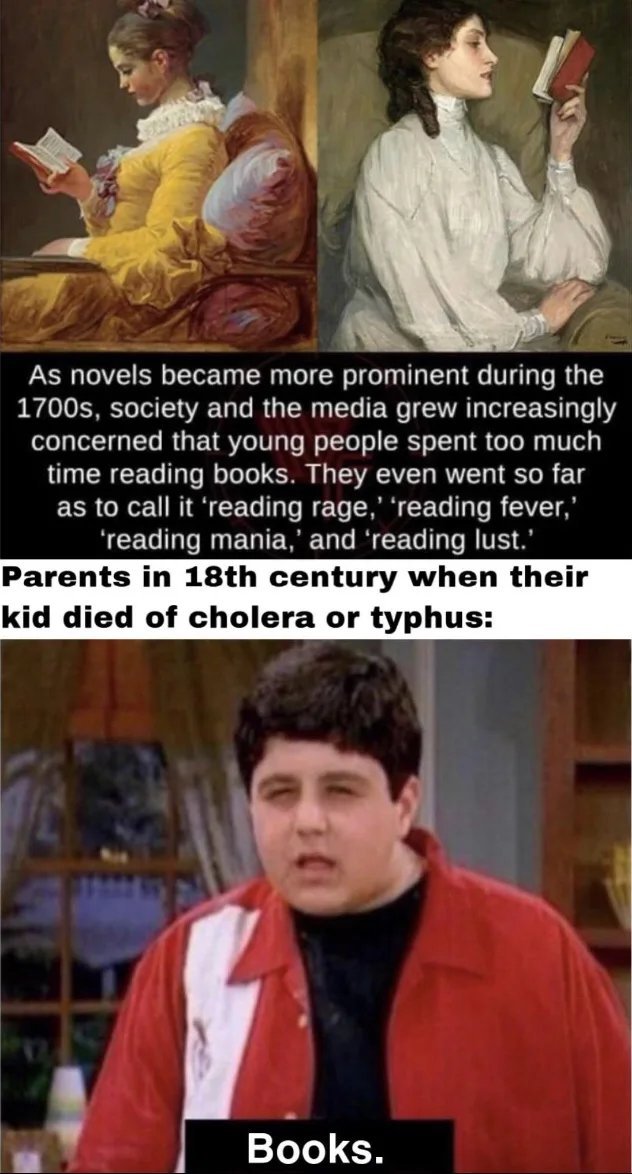
9K notes
·
View notes
Text
Edgar Allan Poe's "The Purloined Letter"

To discover why Poe's credited with inventing the detective fiction genre, read "The Purloined Letter" https://americanliterature.com/author/edgar-allan-poe/short-story/the-purloined-letter
4 notes
·
View notes
Text
Celebrating Black History Month with Award-Winning Books

When I was an adolescent, my father told me something that I have always remembered: “Humanity is a patchwork of vibrant cultures; that’s what makes it beautiful. Three things can bring us all together and help us appreciate one another’s traditions: food, music, and folklore.” I agree wholeheartedly, but I would add a fourth thing to the list: literature. Books have the power to take us into different times and places, allowing us to step into other lives. February, being Black History Month, is a perfect time to celebrate this cross-cultural ability of written words. In that spirit, here is a list of books, ranging from biography to fiction, that highlights authors and characters of African descent.

Things Fall Apart by Chinua Achebe
It’s nearly impossible to discuss African literature without mentioning this novel. Achebe’s Things Fall Apart is a classic, and rightfully so. It’s a narrative filled with contrasts: expectation versus reality, tradition versus colonialism, ambition versus complacency, and Paganism versus Christianity. More than that, however, it is a tale about humanity, and the concerns and weaknesses inherent to it, which transcends cultural lines.
Set in Nigeria during a time when African tribal societies were being changed by an influx of European missionaries and ideas, Things Fall Apart focuses on Okonkwo, an influential member of the Umuofia clan. Although wealthy and respected, Okonkwo is haunted by the memory of his father, Unoko, a gentle musician who hated the thought of bloodshed and who was forever in debt. In a society where warriors were elite, Unoko was considered a coward and that, coupled with his laziness and poverty, made him a shame to his son. This is why Okonkwo is terrified of appearing to resemble his father in any way, and why, when his own son, Nwoye, shows signs of being too much like his grandfather, Okonkwo tries to beat any weakness out of him. Meanwhile, Okonkwo, as a warrior, wins a virgin and an adolescent boy from another village. This boy, Ikemefuna, is the son Okonkwo always wanted, although the man still displays no affection toward him for fear of appearing unmanly. Ikemefuna, however, becomes close friends with Nwoye, and sympathizes with the other boy. The two boys’ closeness makes the effect on the household all the greater when Okonkwo, still driven by his fear of weakness, makes a fatal choice that ends in tragedy for Ikemefuna. This family drama plays out against the backdrop of the larger national drama as Christian missionaries and politicians, some more callous and elitist than others, seek to change the entire culture of the Umuofia.
Achebe writes with keen observation and a deep understanding of human nature, but perhaps the novel’s greatest strength is the way in which it handles cultural norms. Describing customs and traditions in a manner both straightforward and insightful, the author subtly provides circumstantial exposition. By framing unfamiliar ideas in understandable contexts, he renders the culture easy to comprehend, even for readers who have had no experience with it in the past.

The Black Count: Glory, Revolution, Betrayal, and the Real Count of Monte Cristo by Tom Reiss
General Alex Dumas is perhaps the greatest eighteenth-century military leader most people have never heard of. Born Thomas-Alexandre Dumas Davy de la Pailleterie, he was the son of a French nobleman and a back slave. Officially accepted by his father and raised among the European elite, Dumas nonetheless was sometimes made to feel keenly aware of his differences. His life was an eventful one: exploring the wonders of Paris, surviving the French revolution, joining Napoleon’s army, and becoming the real-life inspiration for some of his famous son’s best-known literary heroes. Yet despite all of this, surprisingly few people today even know the man existed.
Tom Reiss, in fact, had to delve deep to find the true story of Alex Dumas, traveling to a small museum in the French town the General once called home, and gaining special permission to examine two-hundred-year-old documents that rarely saw the light of day. The author persevered and created an engaging, well-written biography that is as interesting as it is informative. The material, to my knowledge, will be entirely new to nearly everyone who enjoys it, as I know of no other book on the subject. General Dumas comes to life in its pages, looming larger than life yet completely unembellished. It is easy for readers to see how his true adventures became the basis for several of the novels later penned by his son and namesake, classic writer Alexandre Dumas. The result is an expertly researched work of historical nonfiction filled with as much danger, love, betrayal, and intrigue as anything Dumas the younger ever wrote. For those interested in unique tales of history, this truly is a treasure. I cannot recommend The Black Count enough.
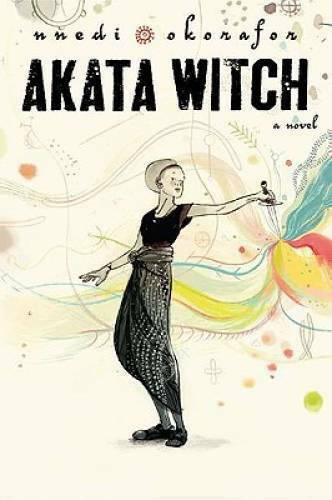
Akata Witch by Nnedi Okorafor
This is a Young Adult Fantasy novel that is, (unfairly, in my opinion,) often referred to as “Harry Potter, but set in Africa.” To call it that discounts all of the folklore and traditional beliefs stirred into the mix, as well as the protagonist’s constant self-identity as an outsider. Twelve-year-old Sunny was born in America, but moved with her parents to Aba. Her distinctly American ideas would make her enough of an outsider, but on top of that, she’s an albino. Frankly, Sunny has never felt like she belonged anywhere. She’s bullied at school and unable to fulfill her dream of playing football (what we here in the U.S. call soccer) thanks to her highly sun-sensitive skin. All of that changes when she Orlu and Chichi, two of the Leopard People, and become part of an Oha coven. Together with her new friends, she sets out to stop a dark magician, Okotoko, who has been abducting and maiming children in his rituals. Sunny, being albino, is thought to possess special power and in particular danger. This reflects a real problem still existing in some parts of Africa.
Indeed, much of the novel is firmly based in African mythology and tradition, and Okorafor does a good job of bringing the culture surrounding both to life. Although the author’s style and tone, in my opinion, improved in subsequent books, Akata Witch is still an enjoyable read. One part fantasy and one part mystery, it’s a fun romp through a magical Otherworld hidden along side ordinary life. It is, of course, a YA novel, so the plot is not overly complex, but nonetheless, if you’re in the mood for something enchanting and entertaining, or looking for a work that will expand a young reader’s horizons in the Fantasy genre, Akata Witch makes for excellent light reading.
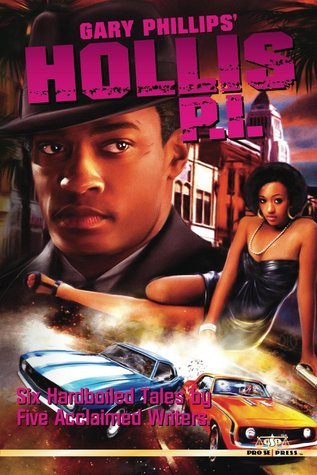
Gary Phillips’ Hollis PI by Gary Phillips
There are several great African American detective mystery writers, but this is one of my favorite collections. It’s fairly short, only six stories, but P.I. Nate Hollis feels so real one almost expects him to leap off the page. This character is not only one of the best African American private eyes in popular literature, but one of the best-written detectives in the entire hard-boiled subgenre as well. Despite the narratives being set decades later, Hollis nonetheless calls to mind classic noir sleuths like Sam Spade. There are stories by Phillips, the detective’s original creator, as well as other writers, but all of them are excellent. This is contemporary hard-boiled fiction at its best.
From a thirty-year-old robbery finally solved by Hollis to an abduction-turned-homicide that brings local corruption to light, everyone of these short stories presents a satisfying tale mystery. There are twists and turns in the narratives, as well as an unexpected ending in one that will surprise readers without feeling like it’s “cheating” with the clues. The voices and tones of the authors vary a little, but not too much, and all of them portray a gritty, realistic, urban environment in which violence, profanity, and occasional sexual situations all play a roll. Set mostly in and around modern day Los Angeles, these short stories offer a look into modern African American society that is every bit as compelling as the mystery plots, but in the end it is the engaging tales of crime and detection that will keep readers coming back for more. This is one anthology that anyone looking for a well-written African American detective, or good hard-boiled detective fiction in general, will not want to miss!
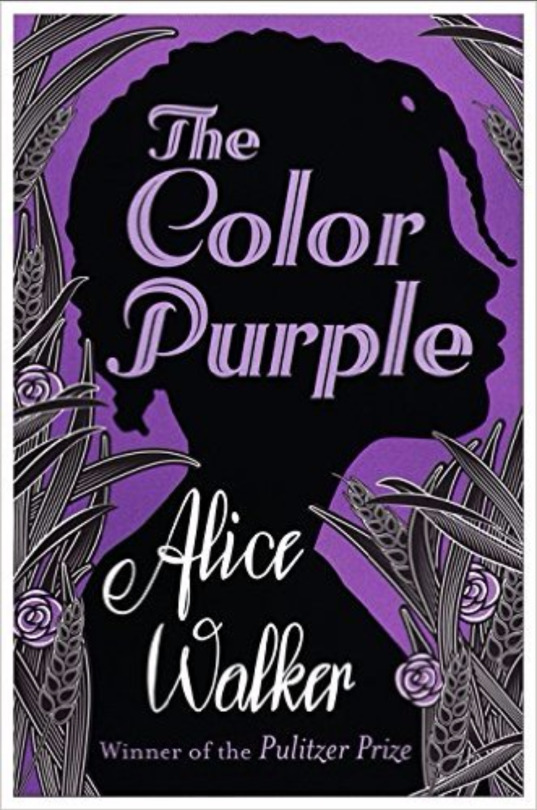
The Color Purple by Alice Walker
This is another classic, and one many have likely already read, but it is nonetheless a book so stunning that it cannot go without mention. In 1930’s rural Georgia, a cast of incredible, strong-willed African American women struggle to gain some sort of control and empowerment in their own lives. The first time I picked up this book, many years ago, I expected the story to be mostly concerned with racism, but I was wrong. While the narrative acknowledges that issue, it delves far deeper into problems within early twentieth-century African American communities, and well as cultural conflict between African traditions and modern ideals. This novel is devastating, brilliant, and beautiful, combining themes of feminism, abuse, empowerment, colonialism, education, hope, spirituality, and forgiveness. Above all, this is a book about sisterhood, and about the many different things that can mean.
Sisters Celie and Nettie were separated as girls, when Celie is forced to marry against her will after suffering years of sexual abuse by her step-father. Her new husband, Albert, cares nothing for her feelings and in fact does not love her any more than she loves him, having only married her so that he would have a housekeeper and a stepmother for his children. It is not until she meets the woman Albert is in love with, a singer named Shrug, that Celie begins to find herself. The two become unlikely friends, leading Celie to begin standing up for herself, explore her sexuality, and question her ideas about religion. Meanwhile, younger sister Nettie flees their abusive stepfather for Celie’s house, only to find herself the focus of unwanted advances by her sister’s husband. With Celie’s help, as well as the help of another African American woman they barely know, Nettie escapes. Nettie finds herself in the care of a preacher, Samuel, and his wife, Corinne, who, unbeknownst to Celie, adopted the two children that resulted from her stepfather’s regular sexual abuse. Together with this couple and their family, Nettie moves to Africa, where Samuel becomes a missionary. Unsure what to expect, Nettie is struck by both the tug-of-war between tradition and modernism as well as the complete disregard of tribal culture by white Christians. Other strong female characters also play their parts, including fiercely independent Sofia and hopeful, complex Mary Agnes, better know as Squeak.
The narrative is, in the end, about African American women finding ways to rise up from a mire of poverty, low education, and sexism to become independent and unapologetically happy. The journey to that point, however, is heartbreaking far more often than it is uplifting. Nonetheless, this is a truly beautiful novel. The narrative voice is lyrical while the dialogue fully captures dialects without becoming difficult to read. The characters are well developed and the plot is both intricate and engaging. The entire novel is thought-provoking and deeply affecting. Although, with its myriad triggers and multiple hardships, The Color Purple may not be for everyone, this book is an award-winning classic for a very good reason!
Although there are a great number of marvelous novels, stories, and nonfictions penned by or about people of African descent, these few selections showcase a variety of genres and experiences. Each of them offers something different, and each will take you on a unique journey. So, as Black History Month continues, celebrate by picking up one of these books! You’ll be glad you did! Happy Reading!
#book#books#novel#novels#short story#short stories#recommendation#recommendations#review#reviews#book reviews#black history month#black literature#African#African American#literature#fiction#nonfiction#book recommendations#read#reading#readers#black#history#book lover#book lovers
77 notes
·
View notes
Text
Asian Fantasy Novels for the Lunar New Year

Photo by Thyla Jane
Happy Year of the Ox! The Lunar New Year, or Spring Festival, is a major celebration in many Asian countries. Marking the first new moon of the lunar calendar, this celebration lasts for days and is a time for family and friends, lantern festivals, dragon and lion dances, gifts of money, fireworks, and feasts. There’s something enchanting about the Lunar New Year, with its bright lanterns lining every street and its sparkling starbursts lighting the night sky. At its heart is tradition, cultural beliefs, and a mixture of mythology and magic. Simple charms are used to bring good luck and drive away evil. The supernatural has a firm place amid the celebrations, from shoe-stealing ghosts in South Korea to Vietnamese kitchen gods to the lion-like monster Nian in China. As such, this holiday presents a marvelous opportunity to both celebrate various Asian cultures and conjure a sense of wonder. So, to celebrate the Lunar New Year, here are four fantasy novels rooted in Asian culture and lore.

Jade City by Fonda Lee
On the island of Kekon, jade grants those with the ability to wield it special powers, but promises pain and death for anyone lacking the right genetics who tries to use it. As a result, jade smuggling is a profitable business and those families with the capacity to use the mineral, called Jade Bones, make up the highest class of society. But now ordinary citizens are somehow gaining the ability to use jade, and it is throwing the society of Kekon into turmoil. As suspicion fuels inter-clan warfare among the noble class, the future of the island nation hangs in the balance. In the midst of this chaos stands three siblings. Kaul Lan, the new, young, peace-loving leader of his family, finds himself faced with the uncomfortable necessity of bloodshed as he tries to steer his clan through these uncertain times. Lan’s brother, the hot-tempered and passionate Kaul Hilo, is like a warrior straight out of old tales: honorable, protective, and hungry for battle and glory. Their sister, Shae, is an independent modern woman who chose to cast aside her jade along with her traditional roles in favor of freedom and marriage to an outsider. Added to this cast of characters is Wen, Hilo’s forbidden lover, who is burdened by the combination of coming from a disgraced family and being a rare Stone Eye, a supposedly cursed person completely immune to jade. All four have their differences and disagreements, and the tension between them mirrors the growing strain in their homeland at large. It will take them all, however, to find out who is responsible for the dangerous drug allowing non-Jade Bones to wield the sacred stone before it is too late.
This is a novel that bridges high fantasy and urban fantasy, weaving a tale of heroism, betrayal, and intrigue against the backdrop of a thoroughly modernized enchanted society. Lee’s narrative is intricate and interesting, her world building is exceptional, and her magical system is comprehensive and intelligent. Running throughout the entire tale are elements of Chinese myth and culture, with folklore concerning gods and monsters playing a vital part. Complex, well-written, and engaging, Jade City is grand and unique fantasy adventure.
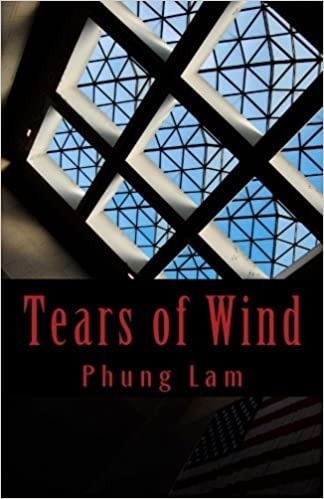
Tears of the Wind by Phung Lam
This collection of short stories is a touching as it is magical. Taking place on the fictional Island of Wishes, each tale explores human nature and the deepest desires people harbor in dark corners of their minds. From a lonely heart seeking solace to a soul hungry with ambition, this anthology explores the not only the power of wishes, but the question: what would people do if the one thing they truly wanted most could be theirs? It’s basically impossible to find an English version of this book, and I had to rely on the Smart Book translation application for the ebook format. That led to some odd phrasing in portions of the text, but the collection was nonetheless enjoyable. That is because Lam writes not only with imagination but also with a keen understanding of humanity.
The narratives are dreamlike, the content somewhat akin to magical realism and the tone ultimately surrealistic. Ranging from heartrending to horrifying, Lam weaves stories about the darkest parts of ourselves, when we harbor wishes we dare not name, as well as about the unforeseen and often terrible consequences of getting exactly what we think we want. The author explores the nature of love, the power of longing, and the baser side of our very nature. It’s an engaging collection that seems, and its core, to turn upon one basic thought: be careful what you wish for.
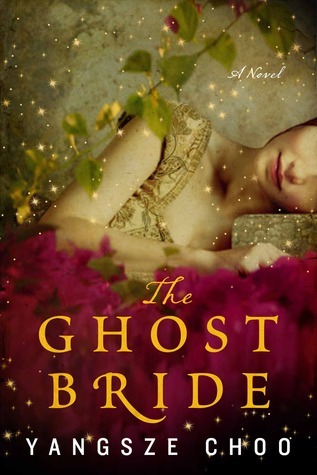
The Ghost Bride by Yangsze Choo
Set in late-nineteenth-century Malaya, on the island of Borneo, this novel sparkles with folk beliefs and superstitions. Li Lan is a spirited girl and only child from a family wrapped in what can only be called genteel poverty. Her life is certainly not perfect—her mother is dead, her father, although loving, has allowed his grief to lead to opium addiction, and her marriage prospects are extremely limited—but things aren’t so very bad. Apart from occasional longings for beautiful new clothing such as she sees other wealthier girls sporting, Li Lan would be reasonably content if it weren’t for one thing: her father has asked her if she would like become a ghost bride. He says it almost as a joke, but the moment he speaks the words, the wheels of fate start to turn. The rare tradition of ghost brides is meant to mollify the spirits of wealthy young men who died without marrying, and it presents both tempting and terrifying prospects. While accepting would mean financial help for her aging father as well as a place for Li Lan herself in one of Malacca city’s most affluent households, it would also mean giving up any dreams of love, passion, or children of her own.
Li Lan, of course, refuses, especially when she starts to develop feelings for another decided living man. But the choice may not be as easy as the thinks. She finds herself haunted by Lim Tiang Ching, her spectral suitor, and he is determined to have her. Tiang Ching, the young woman soon learns, was selfish and cruel when he was alive, and death hasn’t improved him. Desperate, Li Lan seeks the help of a local wise woman, and unwittingly finds herself embroiled in a supernatural struggle where ghosts are all too real and her only hope hangs on a mysterious young man who may be more than he seems, and who is most definitely keeping secrets. On top of that, she begins to realize that the Lim family is harboring some dark secrets of their own, and one of them may be deadly.
Choo’s narrative is imaginative as well as brimming with cultural folklore and traditions. A blend of mystery and fantasy, it is engaging from start to finish. Many of the characters are interesting and a little quirky, although a couple feel less well developed and there were a few moments when I felt the protagonist was a bit too flighty for my tastes. Nonetheless, this is a fun, entertaining fantasy book, perfect for an evening of light reading with a cup of tea or coffee at your side.
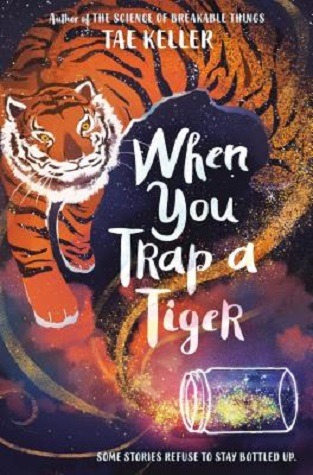
When You Trap a Tiger by Tae Keller
This is a truly wonderful novel blending together magical realism, mythology, family drama, and a deeply touching coming of age tale. It’s a beautifully written and imaginative narrative where opposites don’t so much collide as they do interweave in a complex dance. Dreams tangle with reality, childhood blurs with adolescence, Korean tradition intersects with modern America, folklore mingles with daily life, and stories become solid enough to touch. Through it all runs a profound understanding of emotion and the human spirit.
Lily has always loved visiting her Korean grandmother, catching stars to learn what stories they hold and listening to traditional tales from their ancestral homeland. This, however, is different. Now Lily, along with her mother and her sister, are moving in with the old woman because Lily’s grandmother is sick, and isn’t getting any better. A new city, a new school, and new fears about her beloved relative would all be difficult enough, but Lily has another problem: upon arriving, she sees a tiger straight out of one of her grandmother’s tales. This is both a metaphor for many things: words unsaid, terminal illness, fear, and long-ago mistakes. It is, however, also an introduction of the magical real. Upon informing her grandmother about the big cat, Lily begins unraveling the old woman’s greatest tale yet, and takes the first step in a personal journey to discover family secrets and leave her childhood behind. As marvelous as it is heartfelt, When You Trap a Tiger addresses conflicts between generations and cultures, as well as the reconciliation of the past, through the lens myths and storytelling. At its core, this is a novel about the power of both love and stories, as well as about one girl finding herself.
Perhaps one of these books will make an excellent companion over the next several days as celebrations of the Lunar New Year progress. Blending Asian folklore with a sense of the fantastic, these works may prove to be the perfect way for those not immersed in these festivities to still capture a bit of the season’s spirit. Readers hungry for an interesting narrative that is a little out of the ordinary will likely find any one of these to be a feast for the imagination, as well as a wonderful way to start of the Year of the Ox. Happy Reading!
#book#books#novel#novels#short stories#collection#review#reviews#book reviews#book review#book recommendations#recommendation#recommendations#Lunar New Year#Chinese New Year#fiction#fantasy#magical realism#Asian#folklore#mythology#myth#culture#folktales#reading#read#reader#book lover
9 notes
·
View notes
Text
I’d never even heard of this novel. Thank you to @life-full-of-books for bringing it to my attention! I am now a curious Kat!
I received an early Christmas present today! 
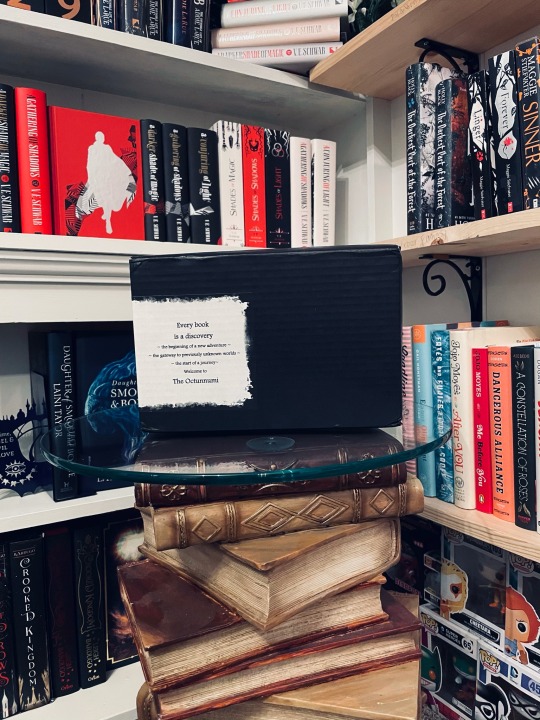
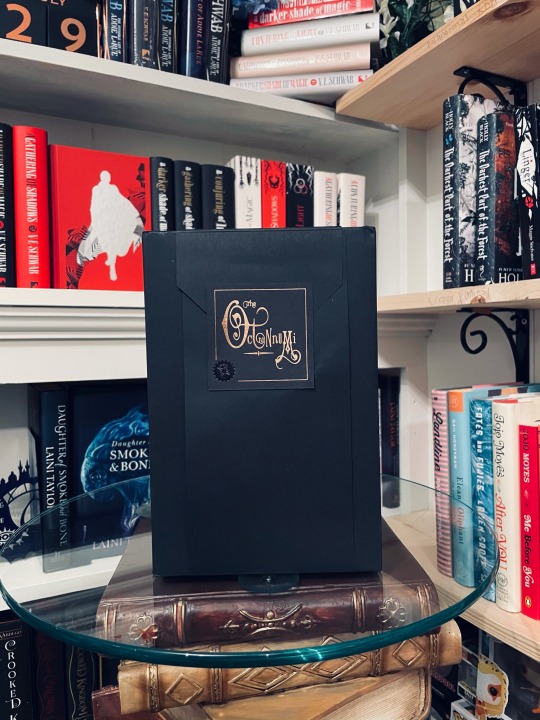
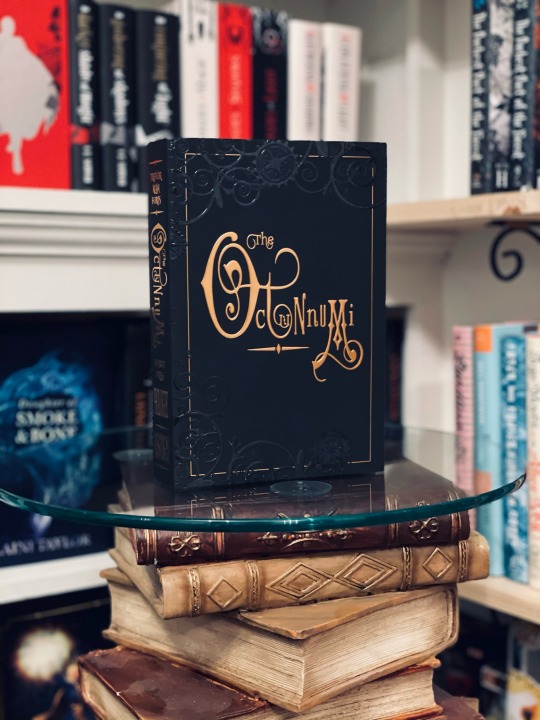
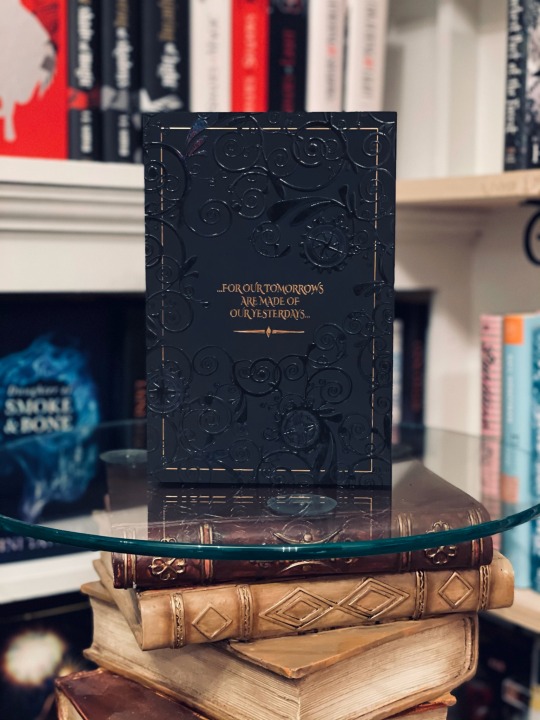

I have seen this all over BookTok and decided I absolutely needed it based on aesthetics alone, lol. I not so subtly hinted to my husband that I desperately wanted this and it came today SOOO, being the amazing sweetheart is he decided to give it to me early.
Has anybody else read it?!
If you’re interested or want to know more, check out the link below. 
89 notes
·
View notes
Text
REVIEW: Dear Neighbour by Anna Willett

Amy’s life is neither what she expected nor what she wanted, but she’s determined to make the best of it. She is afraid to ask too much, believing her lot in life is no worse than it should be. In her late twenties, she’s never really accomplished anything. Coming from a single-parent household, cursed with a facial birthmark and low self-esteem, Amy feels she can’t expect her existence to be sunshine and roses. At least she has a serious boyfriend—even if he is often distant and temperamental—and they’ve just moved into a home of their own—even if it is a rundown rental. She even has a job, granted it’s stocking shelves at a local store for a bullying boss, but still, she can make do, can’t she?
That is readers’ first impression of this novel’s protagonist. Willett does an excellent job of realistically conveying the woman’s low confidence and toxic relationship without making her appear maudlin. In fact, Amy feels like a real person, and those who have experienced negative romances and dead-end jobs will likely empathize with her, but she never crosses the line to become an object of pity. It’s a balancing act that the author does very well, and it lends revelations about Amy’s life an authentic quality.
Because, as readers soon discover, Amy has bigger problems than the port-wine mark on her face and the aloofness of her lover. She is obsessed with her boyfriend, Zane, and that has led her to make some terrible decisions. Then there is Zane’s friend, Spider, whose very presence makes her skin crawl but who she has to endure. The more time that passes, the more she gets the idea that there is something indefinably sinister about the man. Is Spider a threat, or are Amy’s trust issues rendering her paranoid? Finally, there are the new neighbors: Frank and Greta Foxhall. A wealthy and well-mannered older husband and wife, still deeply in love despite their age, the Foxhall’s represent everything Amy wants from life. She is thrilled when they strike up a friendship, but something isn’t quite right. Is it possible that the apparently perfect couple next door is hiding something? And could they have designs involving Amy? Or is the real danger closer to home?
Engaging, well-paced, and insightful, the narrative sometimes defies readers’ expectations and sometimes doubles back to fulfill them. The tone is almost matter of fact, which works perfectly for this novel. Although the language is not overly descriptive, it deftly portrays feelings and sensations in a way that is as true as it is brief. Willett subtly changes the way she details characters and situations to mirror Amy’s altered perceptions as her eyes increasingly open to reality. That is a vital part of the protagonist’s character development because, at its heart, this is as much a story about a young woman finding herself as it is about the perilous and tangled web she finds herself in. If you enjoy good suspense thrillers as well as dynamic female characters learning to spread their wings, I recommend Anna Willett’s Dear Neighbour.
#book#books#novel#novels#suspense#thriller#thrillers#Dear Neighbour#Dear Neighbor#book review#review#reviews#Anna Willett#suggestion#suggestions#recommendation#recommendations#book lover#book lovers#read#reading#reader
0 notes
Text
REVIEW: A Man Called Ove by Fredrik Backman

I first fell in love with Fredrik Backman's work while reading My Grandmother Asked Me to Tell You She's Sorry, so when this book crossed my path, I was only too happy to pick it up. Backman weaves his literary magic in a tale that is by turns funny, heartbreaking, and insightful. Filled with unique characters that are nonetheless deeply relatable, A Man Called Ove touches on the heart of what it means to be part of a community, and by doing so transcends cultural lines. It is every bit as beautiful and inspiring in English as it must be in it's original Swedish, and I imagine readers would have the same experience reading this novel in Japanese, French, Arabic, or any other tongue.
The narrative centers on the titular character, an elderly man named Ove. At first readers may find the protagonist a little disagreeable—he’s grumpy, unsociable, and sometimes outright rude— but Backman does an excellent of making Ove’s quintessential grouchiness believable while never taking it far enough to make him an unsympathetic character. It’s a balancing act that the author does very well. Through a series of events ranging from hilarious to heartfelt, Ove finds his solitude continually interrupted by new neighbors, an old acquaintance, and a cat. The old man wants nothing to do with any of them, but life seems to be conspiring against him, and not even his snarkiest comments or foulest moods seem to hold his determined would-be friends at bay. Almost against his will, Ove feels the combined warmth of these invaders is starting to melt the stony chill from his heart. Backman weaves his tale of human emotion and powerful friendship so subtly that he manages to deftly address memories and hardships which might make a lesser novel appear almost melodramatic. His narrative is deep and authentic, never once feeling even slightly forced.
This in itself is a triumph, but it is not the most noteworthy aspect of the book. Neither is the admittedly impressive writing skill Backman displays. Although the prose is lyrical, the characters are believable, and the descriptive language is both unique and stunningly vivid, this novel’s real genius shines in Backman’s use of time. Similar to the concentric circles once used in ancient sacred art to describe time itself, A Man Called Ove is a circular narrative containing smaller circular narratives. The brilliance of this is that it slowly reveals both the past and the true nature of Ove, making readers gradually grow more empathetic and positive toward a protagonist who is, as previously mentioned, originally unlikable. It helps readers share other characters' experiences of getting to know Ove, and causes one to want to look twice at grumpy elders met in real life.
If you enjoy literary fiction that touches the heart as well as the mind, I highly recommend A Man Called Ove. (It's an added bonus if you, like me, are a cat lover.) With it's heartwarming narrative, beautiful style, and slightly quirky characters, this novel is certain to leave you with a smile on your face and a love for Backman's work. I can hardly imagine a book more likely to be universally enjoyed. Chapter after chapter, readers will sometimes be left with an aching with pity and sometimes be left helpless with laughter, but they will always be left feeling as if someone has touched their soul.
#book#books#novel#novels#fiction#literary fiction#A Man Called Ove#Fredrik Backman#literature#heartwarming#touching#cat#cats#cat lover#cat lovers#book lover#book lovers#review#reviews#suggestions#suggestion#library#book review
1 note
·
View note
Text
Shared from one of my other blogs, where I focus on magical realism, mythic fiction, and urban fantasy.
Five Exceptional Fantasy Books Based in Non-European Myth

Photo by Josh Hild
Don’t misunderstand me: I love reading well-written fantasy with roots in the familiar Celtic and English folklore of my childhood, but with the vast majority of High Fantasy being set in worlds closely akin to Medieval Europe, and a large amount of of Mythic Fiction drawing on legends of similar origin, sometimes the ground begins to feel too well trodden. There is, after all, an entire world of lore out there to draw from. That’s why I’m always thrilled to find excellent works of what I call “the Realistic Sub-Genres of Fantasy” based in or inspired by myths from other cultures. Such books not only support inclusiveness, but also expand readers’ experiences with lore and provide a wide range of new, exciting realities to explore. So, if you are looking for something different in the realm of Fantasy, the following novels will provide a breath of fresh air.

The Golem and the Jinni by Helene Wrecker
In this beautifully written novel, Wrecker draws on both Middle-Eastern and Jewish mythology to tell the stories of two unwilling immigrants in Edwardian New York and the unlikely friendship that springs up between them. Chava, an unusually lifelike golem created for peculiar purposes, has only days worth of memories and is practically childlike in her innocence. Ahmad the Jinni has lived for centuries, but is trying to reclaim his forgotten past. The former is as steady and calm as the earth she’s made from while the latter is as volatile and free-spirited as the fire within him. Both must learn to live in an unfamiliar new culture and find their places in a city too modern for myths even as they hide their true natures. It’s a wonderful metaphor for the experiences of immigrants everywhere, who often find themselves feeling like outsiders—isolated and even overwhelmed— as they struggle to adapt to life in an alien society.
Full of memorable characters, vivid descriptions, and interesting twists, The Golem and the Jinni takes readers on a journey that is driven as much by internal conflict as external action. The setting of 1900’s Manhattan is well-researched and spectacular in its detail. Wrecker blends two old-world mythologies into the relatively modern Edwardian world with a deft hand. The result is not only fascinating, but also serves to illustrate the common early-twentieth-century experience of an immigrant past colliding with an American future.

The Tail of the Blue Bird by Nii Ayikwei Parkes
One part Detective Mystery and one part Magical Realism, this novel invites readers to experience modern-day Ghana in a way that is both authentic and profound. When Kayo, a forensic pathologist just beginning his career, is pushed into investigating a suspected murder in the rural village of Sonokrom, the last thing he expects is to have a life-changing experience. Soon, however, he gets the acute sense that the villagers may know more than they’re letting on. When all of the latest scientific and investigative techniques fail him, even as odd occurrences keep dogging his steps, Kayo is finally forced to accept that there is something stranger than he thought about this case. Solving the crime will require more than intelligence and deduction; it will require setting his disbelief aside and taking the traditional tales and folklore of an old hunter seriously. Because whatever is happening in Sonokrom, it isn’t entirely natural.
This novel is brilliant not only because of its deep understanding of Ghanaian society and realistic setting, but also because of Parkes writing style. The narrative is gorgeously lyrical and everything within it is described with a keen, insightful eye. The dialogue is full of local color, and while some may find the pidgin English and native colloquialisms difficult to follow, I found that the context was usually enough to explain any unfamiliar terms. Sometimes the narrative feels a little dreamlike, but that is exactly the way great Magical Realism should be. The Tail of the Blue Bird insistently tugs readers to a place where reality intertwines with myth and magic, all while providing an authentic taste of Ghanaian culture.

The Deer and the Cauldron by Jin Yong
During the reign of Manchu Emperor Kang Xi, China is in a state of barely-controlled sociopolitical unrest. Many of the older generation remember the previous dynasty, and there still remain vestiges of a resistance movement hidden among the populace. As his forces continue to hunt down the malefactors, called the Triad Societies, the boy-emperor turns to his unlikely friend and ally: a young rascal known only as Trinket. This protagonist is a study in contrasts: lazy yet ambitious, cunning yet humorous, roguish yet likable, foul-mouthed yet persuasive. Born in a brothel, Trinket has made his way by his wits alone. At age twelve, he accidentally sneaked into the Forbidden City—a bizarre occurrence in itself—afterward befriending Kang Xi. Now, rising quickly through the ranks, he is on a mission to (ostensibly) find and weed out the Triad Societies, and he uses the opportunity to infiltrate various organizations, playing their leaders against one another for his own gain. With a dangerous conspiracy brewing in the Forbidden City itself, however, he is forced to choose sides and decide what is most important to him: friendship, fortune, or freedom. Supernatural occurrences, daring escapades, and moments of deep introspection abound as Trinket struggles to navigate the perilous maze his life has become.
This novel is like a gemstone: bright, alluring, and many faceted. At times it may seem somewhat simple on the surface, but looking closer reveals new depths and multiple layers. Full of intrigue, action, horror, and even laughs, The Deer and the Cauldron mirrors not only the complexities of its setting, but those of the China the author himself knew during the Communist revolution. By blending together history, fantasy, realism, humor, and subtle political commentary, Yong not only beautifully captures these social intricacies but also creates a narrative that is as thoroughly engaging as it is unapologetically unique.
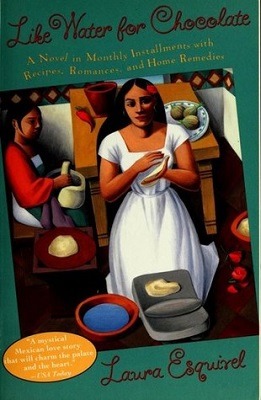
Like Water for Chocolate by Laura Esquivel
Magical realism related to food has almost become a movement in itself, with novels like Aimee Bender’s The Particular Sadness of Lemon Cake, Joanne Harris’ Chocolat, and Sarah Addison Allen’s Garden Spells all finding their places in readers’ hearts. Originally published in 1992, Like Water for Chocolate helped create this fascinating trend, and it has become something of a modern classic in the fantasy genre.
The narrative centers around Tita de la Garza, a mid-twentieth century Mexican woman possessing deep sensitivity, a strong will, and a special talent for cooking. Born prematurely, Tita arrived in her family’s kitchen, tears already in her eyes. It is in that room where she spends most of her childhood, being nurtured and taught by the elderly cook, Nacha. The relationship that flourishes between Tita and her caregiver is a special gift, as it provides the girl not only with the compassion and support her own mother denies, but also with a passion and skill for creating incredible, mouth-watering dishes. At Nacha’s side, Tita learns the secrets of life and cookery, but she also learns one terrible fact: thanks to a family tradition, she is destined never to have love, marriage, or a child of her own. Her fate, rather, is to care for her tyrannical widowed mother, Mama Elena, until the day the older woman dies. With a vibrant, independent spirit, sixteen-year-old Tita flouts this rule, falling deeply in love with a man named Pedro who asks for, and is denied, her hand in marriage. Undaunted, the young man agrees to wed one of Tita’s older sisters, Rosaura, instead, as he believes this to be the only way he can be close to the woman he loves. Thus begins a life-long struggle between freedom and tradition, love and duty, which is peppered throughout with supernatural events and delicious cuisine. So great is her skill in cooking that the meals Tita prepares take on magical qualities all their own, reflecting and amplifying her emotions upon everyone who enjoys them. Controlled and confined for much of her existence, food becomes her outlet for all the things she cannot say or do. The narrative itself echoes this, by turns as spicy, sweet, and bitter as the flavors Tita combines. At its heart, this is as much a tale about how important the simple things, like a good meal, can be as it is a story about a woman determined to be her own person and choose her own fate.
Cuisine is fundamental to this novel, with recipes woven throughout the narrative, but that is only a part of its charm. In the English translation, the language is beautiful in its simplicity. The characters often reveal hidden depths, especially as Tita grows up and is able to better understand the people around her. Heartfelt in its joys and sorrows, Like Water for Chocolate glows with cultural flavor and a sense of wonder. It’s a feast for the spirit, and like an exquisite meal, it never fails to surprise those who enjoy it.
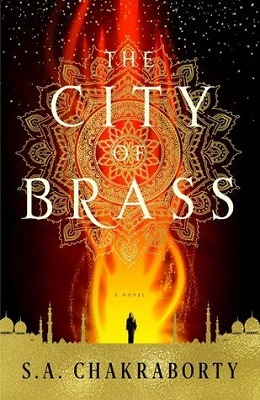
The City of Brass by S. A. Chakraborty
When I first read this novel, I found the early chapters enjoyable and engaging, but felt the story was no more than a typical, if especially well-written, work of mythic fiction. The deeper I got into the narrative, however, the more wrong I was proven. The City of Brass is anything but ordinary. While basing her work in Middle-Eastern lore and history, Chakraborty nonetheless manages to create a setting and story that are both wonderfully unique. Lush, detailed, and bursting with magic and intrigue, this book spans the lines between several sub-genres of fantasy without ever losing its balance.
Beginning in eighteenth-century Egypt, the narrative follows a quick-witted antiheroine. Nahri doesn’t live by the rules of her society. She doesn’t believe in magic or fate or even religion. Orphaned for most of her life, survival has required her to become a con artist and a thief. As a result, she is practical and pragmatic, a realist who has never even considered donning rose-colored glasses, and the last person who would ever expect anything supernatural to occur. Which, of course, means that it does, but the way in which it is handled is intricate and interesting enough not to feel trite. When Nahri’s latest con—a ceremony she is pretending to perform and doesn’t believe in even slightly—goes awry, and the cynical young woman finds herself face to face with a Daeva. Magical beings, it transpires, are real after all, and this one is furious. To both of their dismay, he’s also bound to Nahri, who soon realizes that he has an agenda of his own. In return for rescuing her (and refraining from killing her himself) Dara, the Daeva warrior Nahri accidentally summoned, wants her to pull of the biggest con of her life: pretending to be the half-human heir to the throne of his people. Worse still, she soon realizes that Dara, whose mentality sometimes seems a little less-than-stable, actually believes she may be exactly who he claims. He has something planned, and his intentions may not be in her best interest. Dragged unwillingly into a strange world of court intrigue, danger, social upheaval, and magic, Nahri quickly discovers that some things remain familiar. People are ruled by prejudices, the strong prey on the weak, and she can’t fully trust anyone. The stakes, however, are higher than ever, and Nahri will need all of her wits, cunning, and audacity if she wants to survive.
This novel was thoroughly enjoyable, and in fact prompted me to buy the following books in the trilogy as they became available. Chakraborty’s style is lyrical, her world building is superb, her plot is intricate, and her characters are well-developed. She not only frames unfamiliar words and ideas is easily-comprehensible contexts, but weaves those explanations smoothly into the narrative. The culture, mythology, and history surrounding her tale are all carefully researched, but the tale itself is nonetheless unique. What begins feeling like a fairly ordinary mythic fiction novel will pleasantly exceed readers’ expectations.
So, while we, as fantasy readers, love the works of authors like J. R. R. Tolkien, Marion Zimmer Bradley, and Charles de Lint, there is also a plethora of other enchanting books to enjoy. Exploring magical realism and mythic fiction based in cultures and folklore from all around the globe ensures that our to-read lists will always hold something unexpected and exciting to surprise us. So, if you’re starting to feel like you’re in a bit of a reading rut, or if you’re simply looking to expand your horizons, open up new realms of imagination by opening up one of the novels above. Who knows see where it will lead you? You may just discover a new favorite to add to your bookshelf. Happy reading!
#book#books#novel#novels#international#non-European#magical realism#mythic fiction#fantasy#fantasy literature#review#reviews#suggestions#read#reading#African#central american#mexican#Middle-Eastern#Asian#Chinese#Ghanaian#book lovers#book lover#myth#mythology#legend#folklore#fiction
9 notes
·
View notes
Photo

Writers and book lovers know what I mean.
#write#writer#writing#life#positive#humor#funny#plot twist#carry on#keep going#keep on writing#smile#keep smiling#keep on smiling#be positive#uplifting#book#books#book lover#book lovers#bibliophile#happy#joy#happiness#contentment#living#good advice
7 notes
·
View notes
Text
REVIEW: The Bonesetter’s Daughter by Amy Tan

Photo by by Zhang Kaiyv
This is a beautiful tale about the bonds between mothers and daughters, as well as those between tradition and modernity. Both connections are, at best, complicated for Ruth, a professional writer and the daughter of a Chinese immigrant, LuLing. Ruth's life is made further complex by a strange malady: an annual case of laryngitis that returns every August.
As the story begins, LuLing gives her daughter something special: papers that reveal a window into her mother's past. Ruth, who has only a basic knowledge of Chinese writing, at first forgets about the documents. When her mother's memory begins failing, however, she finally asks an acquaintance to translate the manuscript. The story that begins taking shape is stunning, and will lead to Ruth gaining a better understanding of who her mother is, and how her own yearly affliction is connected to family history.
Well-written and engaging, Amy Tan spins a tale of love and forgiveness, tradition and emotional rebellion, and one young woman's coming of age. The narrative is divided into two parts, the first in modern day San Francisco, where Ruth is at last beginning to connect with her mother, and the second set in the village where LuLing grew up-- a place haunted by ghosts and memories, as well as a family curse. Readers are taken along on a bitter-sweet journey that weaves mystery into a narrative about LuLing's efforts to find her footing in a tug-of-war between tradition and independence, between her family and her love, between what she wants and what is expected. The tale draws aspects of Chinese culture into the story skillfully enough that even those of us with little previous experience find them easy to understand. The result is a vibrant novel, by turns heartwarming and heartbreaking, that reminds readers of one simple truth: those we love do not need to be perfect, they simply need to be ours.
I greatly enjoyed this novel. If you are looking for a book that offers an intricate, literary plot, imperfect, interesting characters, and just a subtle touch of the supernatural, you will love The Bonesetter's Daughter.
#book#books#novel#novels#review#reviews#recommendation#recommendations#reader#read#reading#booklover#China#Chinese#san fransico#Bonesetter#Bonesetter's#Daughter#Amy Tan#literature#fiction#literary fiction#magic#mother#family#drama#love
0 notes